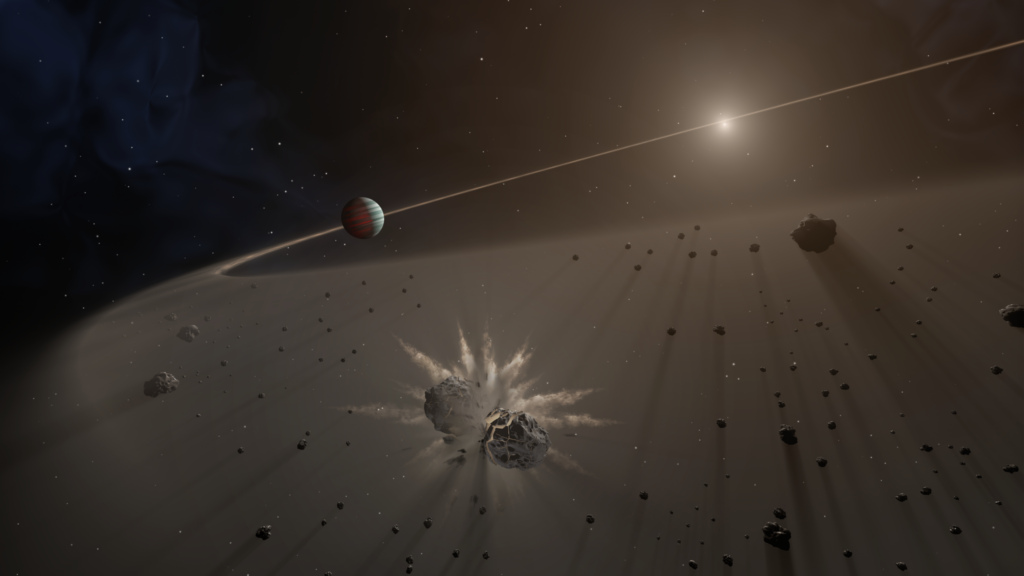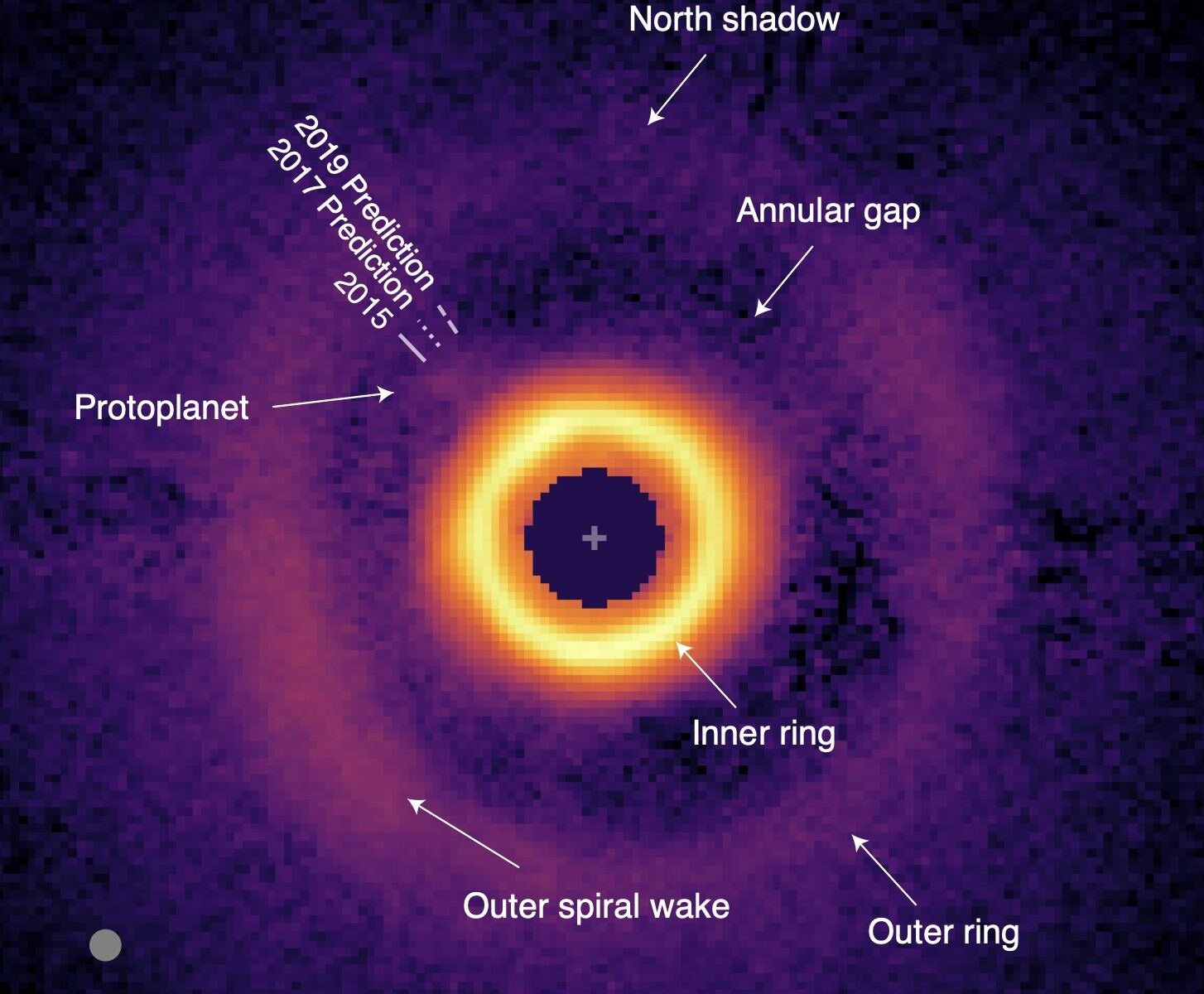Scientists have published data from ten years of observations of the HD169142 system. They find a gap in the protoplanetary disk that surrounds the star, and in it there is a point source of the signal. It looks like it’s a newborn planet.

Newborn planet
Scientists published the data of their observations of the HD169142 system, which they conducted for 10 years. Its plane is almost perpendicular to the beam of our vision, so astronomers can study it well. It is a very young star surrounding a dense protoplanetary disk.
It was in it that the team of scientists was able to detect a gap. It is located 37 au from the star. Since the system is in the process of forming planets, it is logical to assume that the presence of this gap is associated with this process.
And indeed, scientists soon discovered a tiny point source that moved through the cracks and could only be a planet. In addition, they find that the edges of the slit are very bright and spiral structures stretch from them to the star. All this is in good agreement with modern ideas about how the process of planet formation takes place.
Planet Formation
According to astronomers, the planet in the HD169142 system has already reached the mass of Jupiter, but it is still continuing to form. It will continue to grow for some time, extracting more and more gas from the environment.

But scientists can’t say anything about other planets in this system yet. It is quite possible that they are also forming, but much smaller and the cracks formed by them are simply not visible. Or maybe they will form a little later.
We still know very little about how gas giants and planets form from protoplanetary disks. It is such observations that provide scientists with factual material that can confirm certain computer models.
According to phys.org
Follow us on Twitter to get the most interesting space news in time
https://twitter.com/ust_magazine

